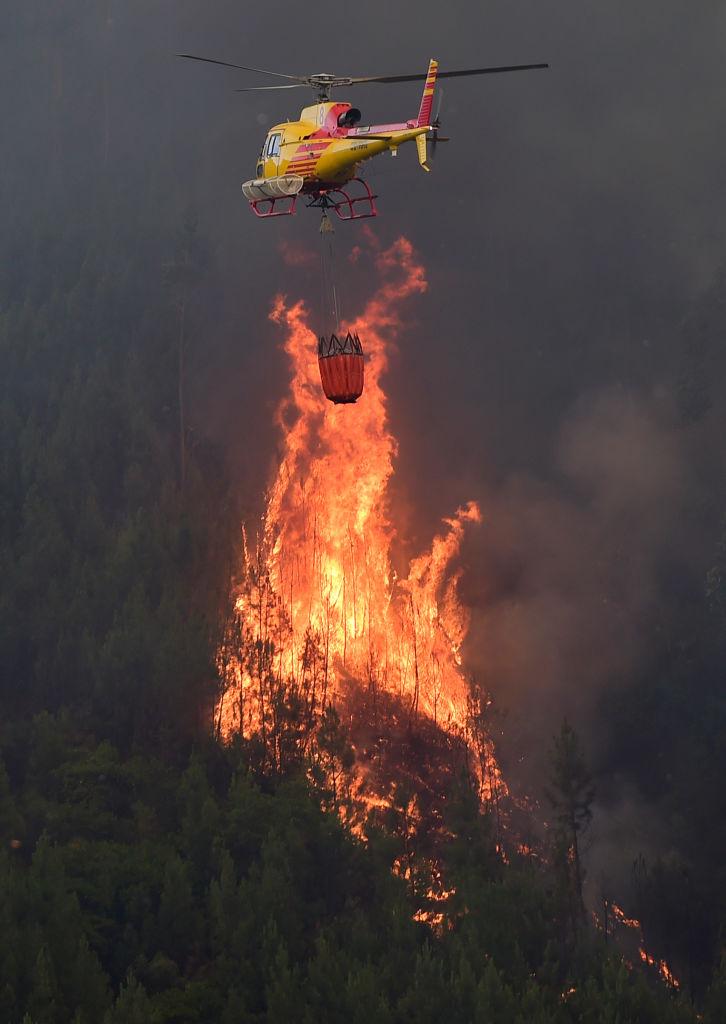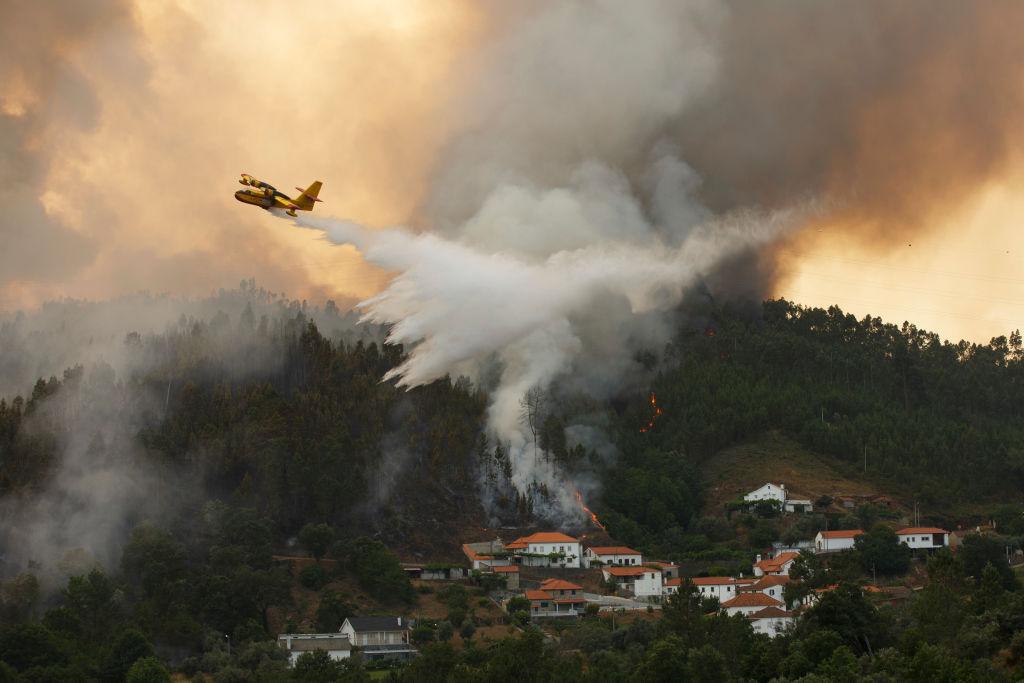Portugal’s Civil Defense Commander Vitor Pinto said the forest fire, which has raged across central Portugal since Saturday, June 17, is almost completely contained.
“At this moment we have 95 percent of the fire perimeter under control,” he stated. “Five percent still active with high risk potential.”
Pinto could not say when the fire would be fully contained.
The combination of drought-dried forests, high heat, strong winds, and mountainous terrain make fighting the fire difficult.
The fire started near Pedrógão Grande, about 100 miles north of the capital, Lisbon, probably the result of a lightning strike. It burned out of control through the weekend, killing dozens of people who were trying to flee.

A helicopter overfly a wildfire in Carvalho, next to Pampilhosa da Serra, on June 19, 2017. MIGUEL RIOPA/AFP/Getty Images





